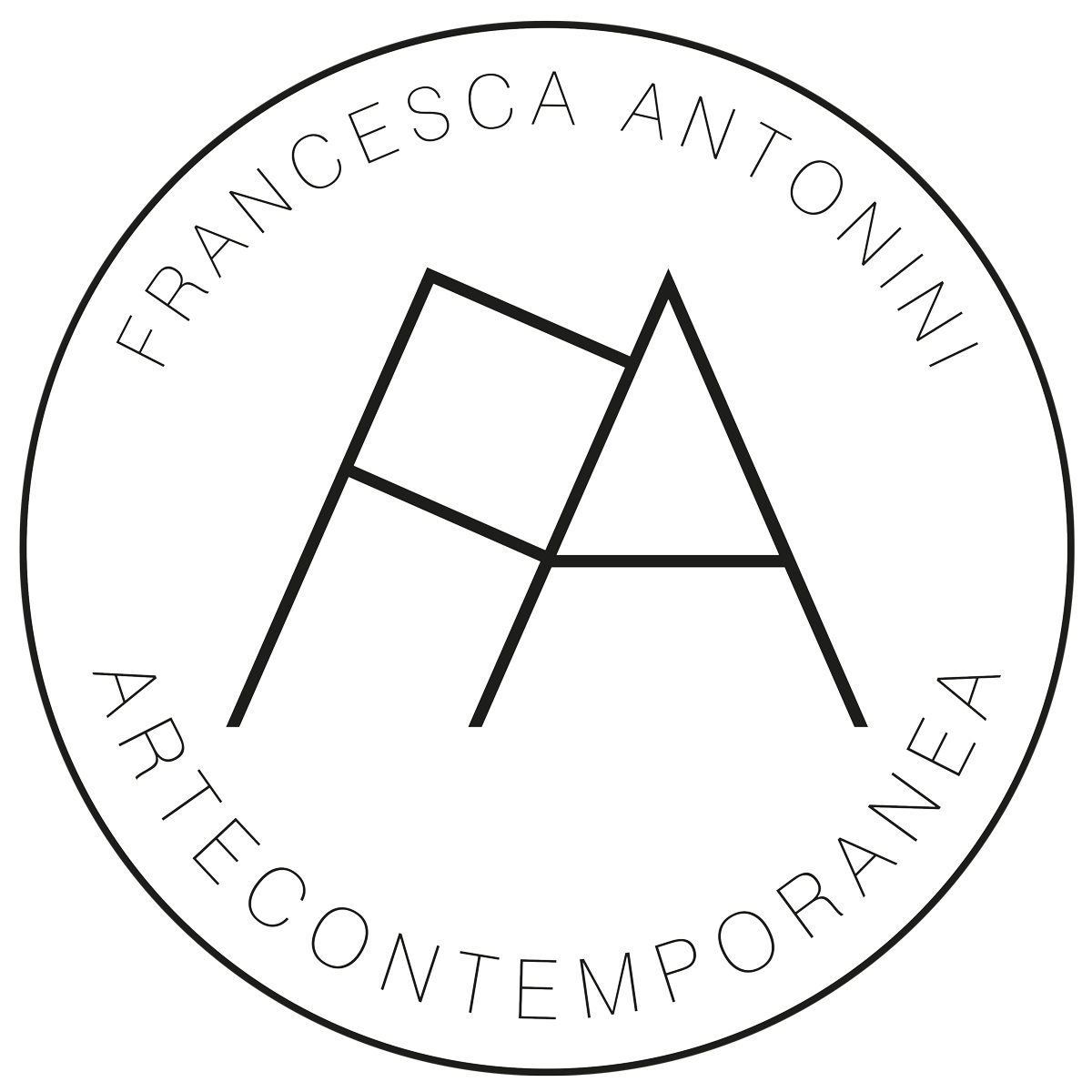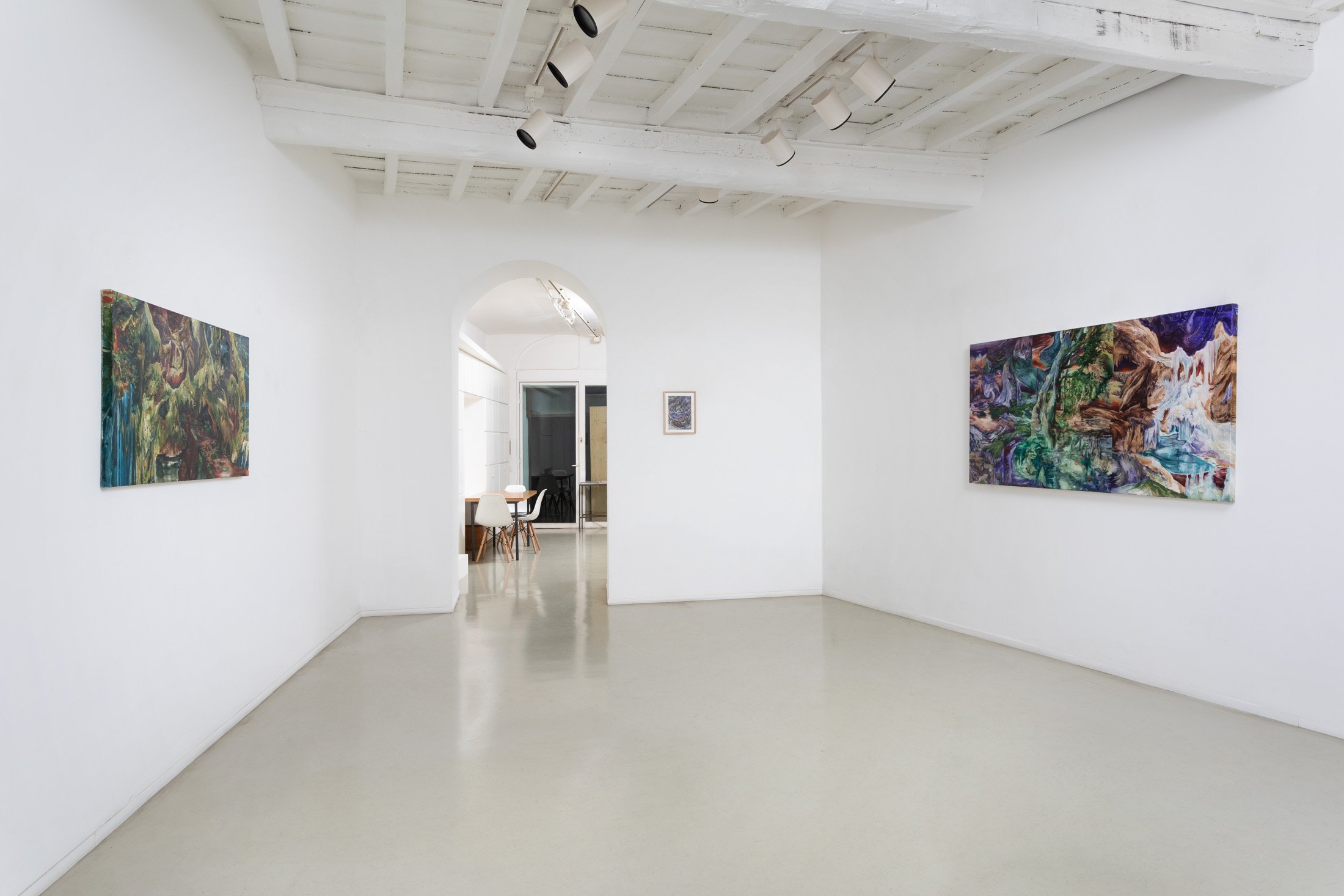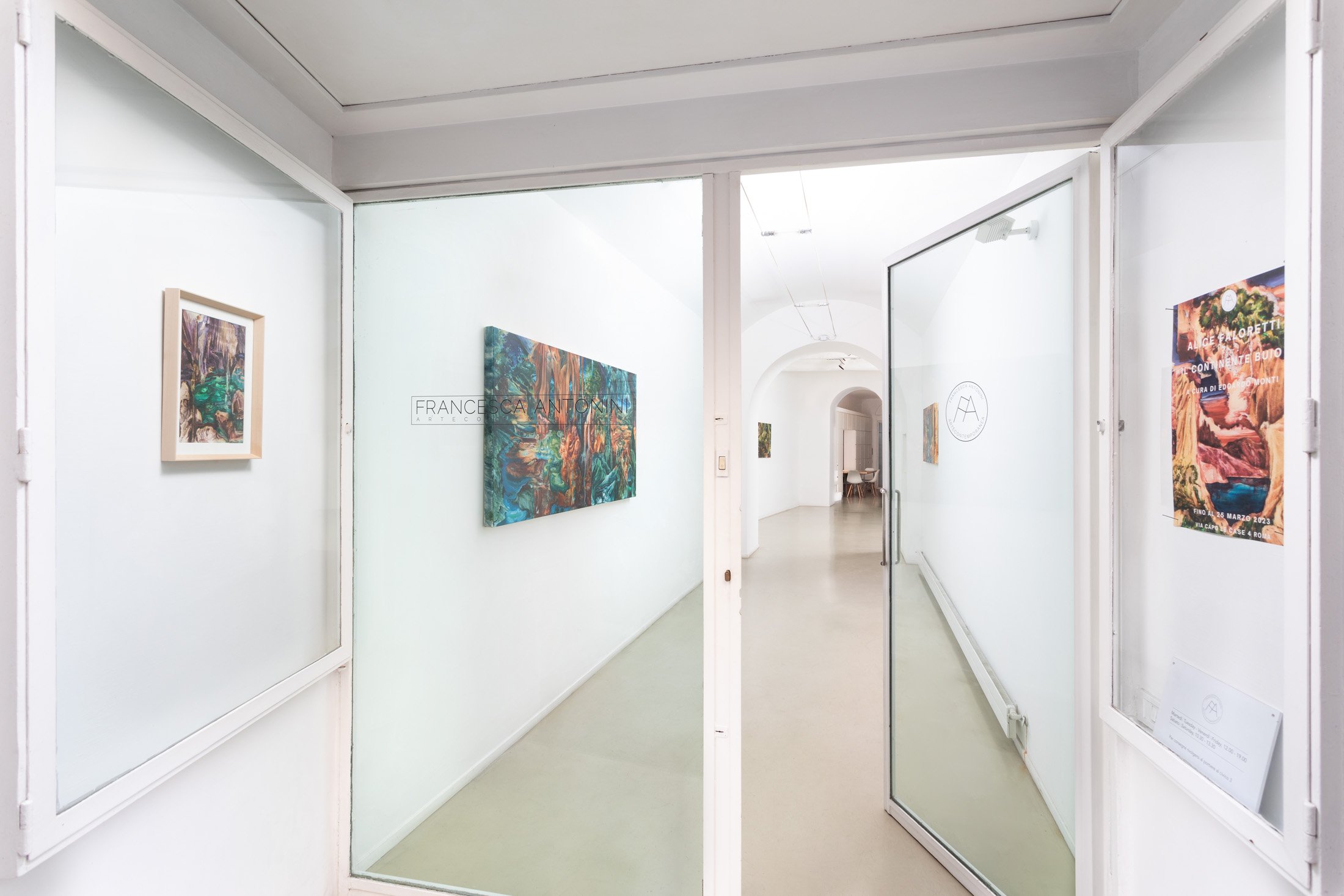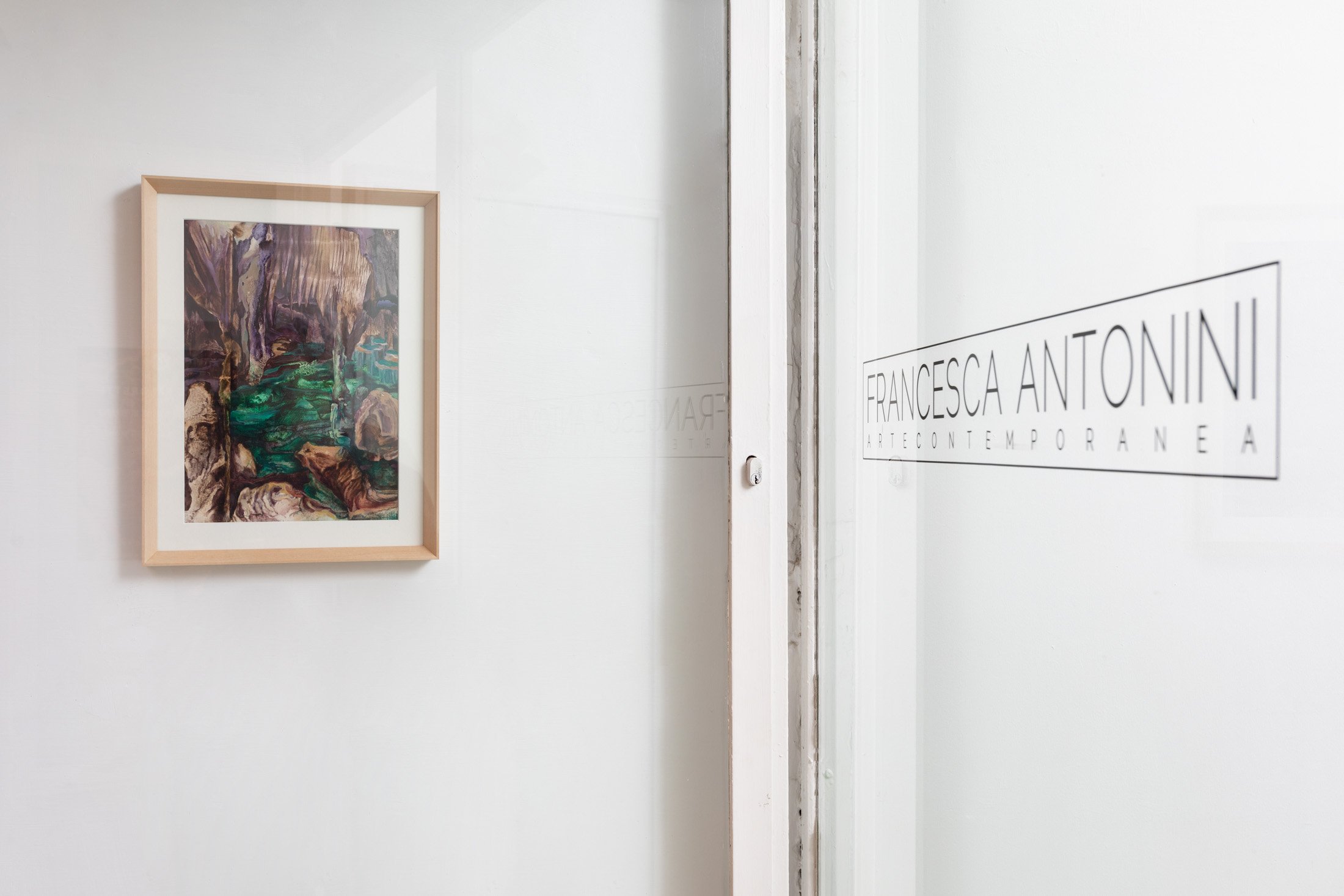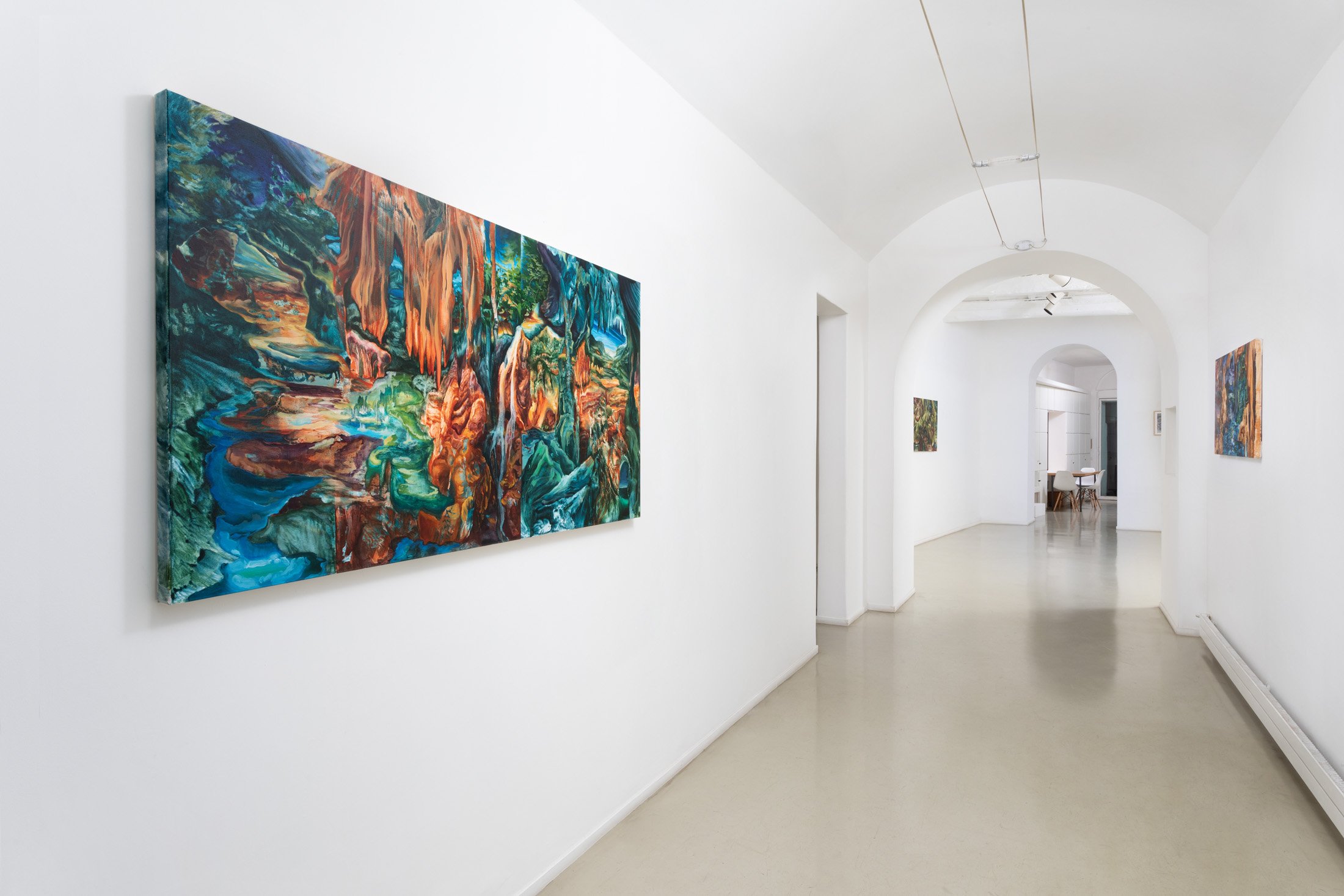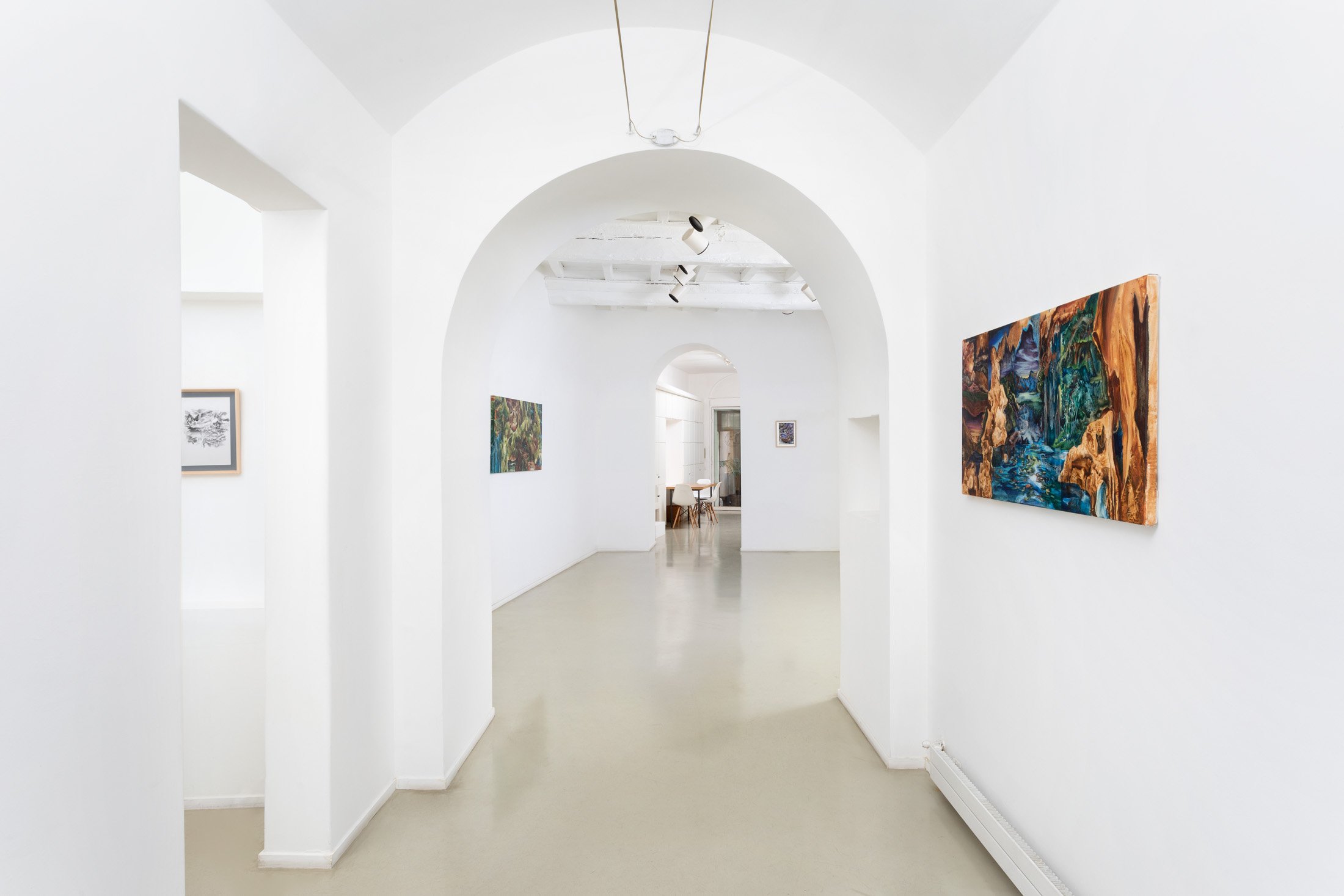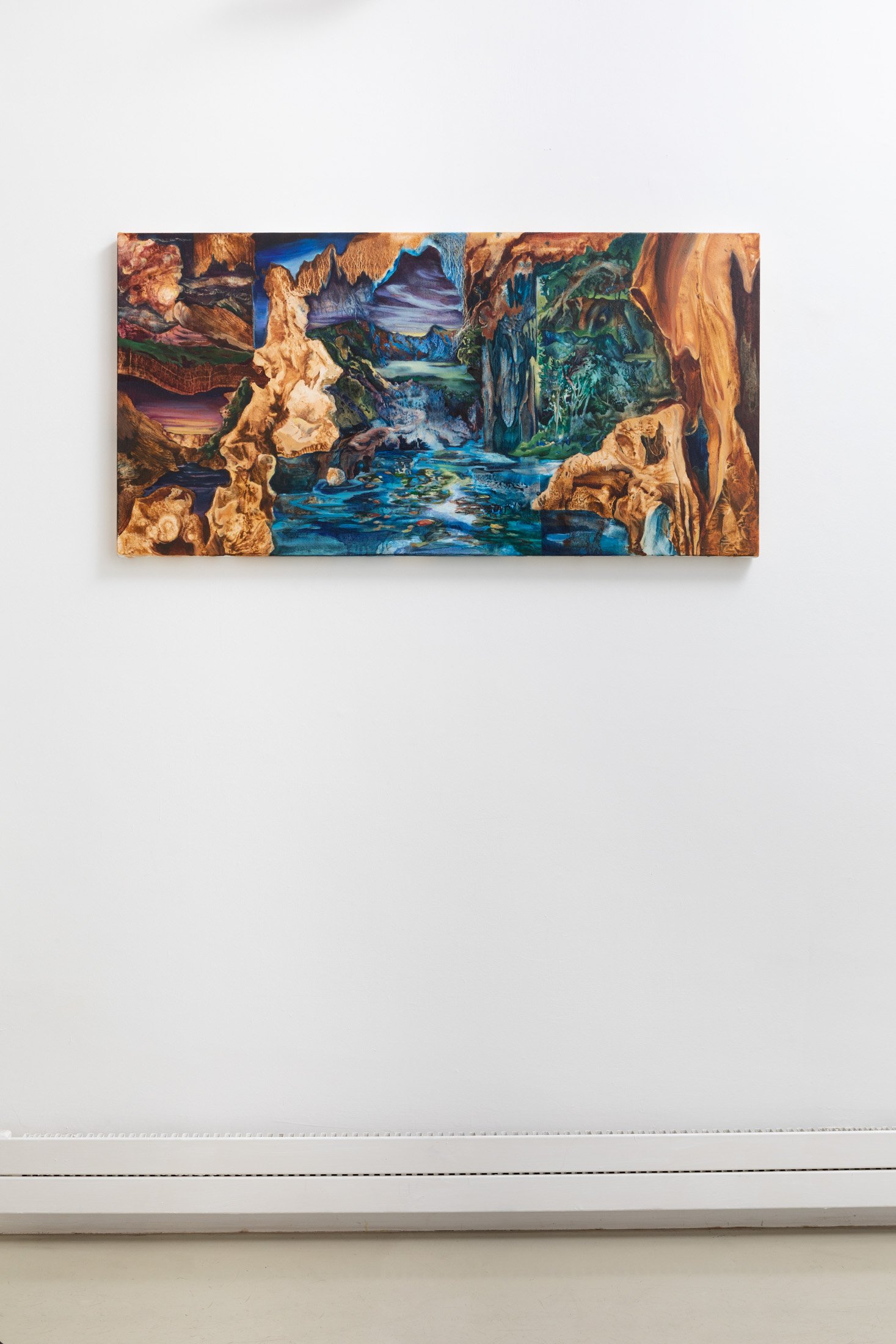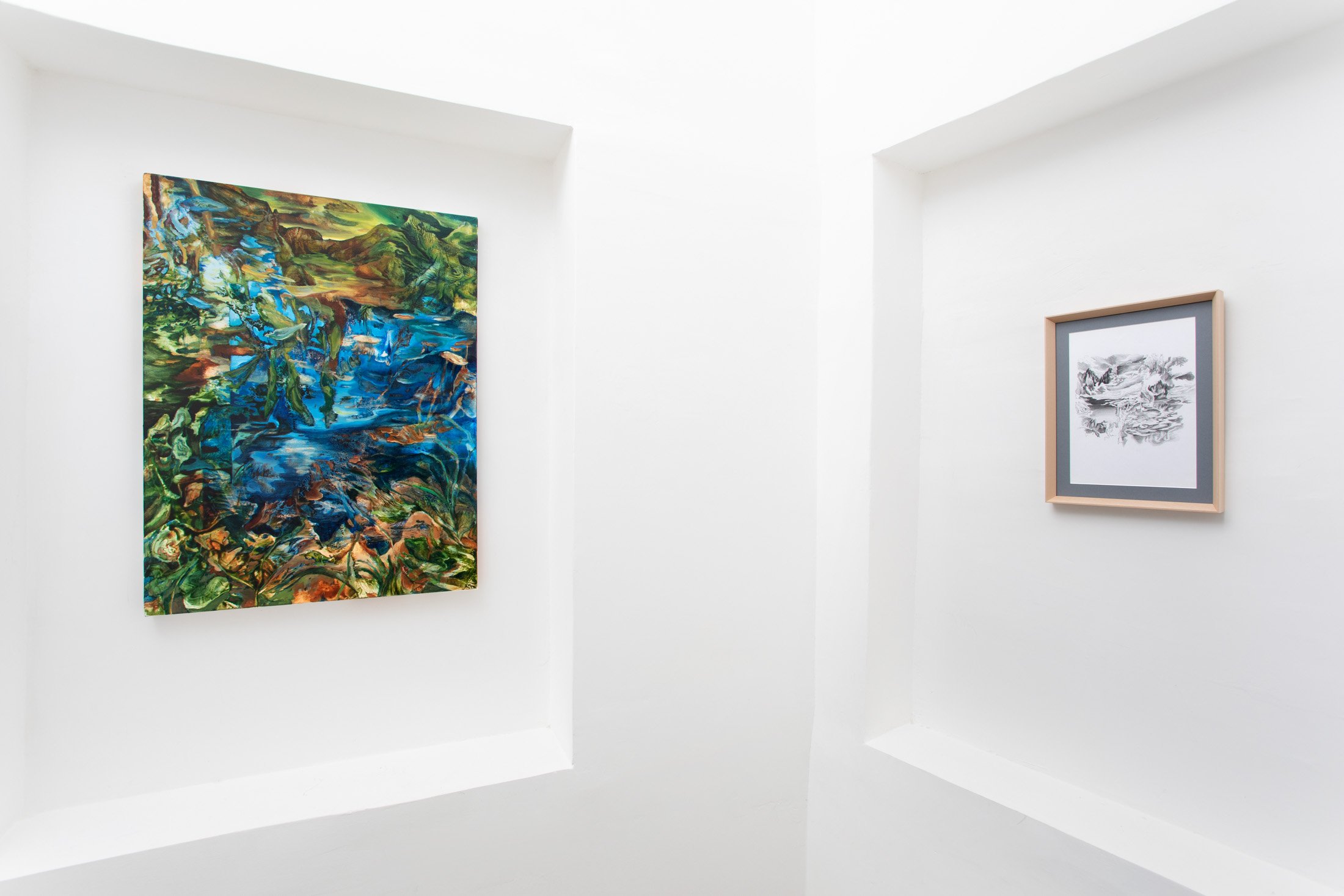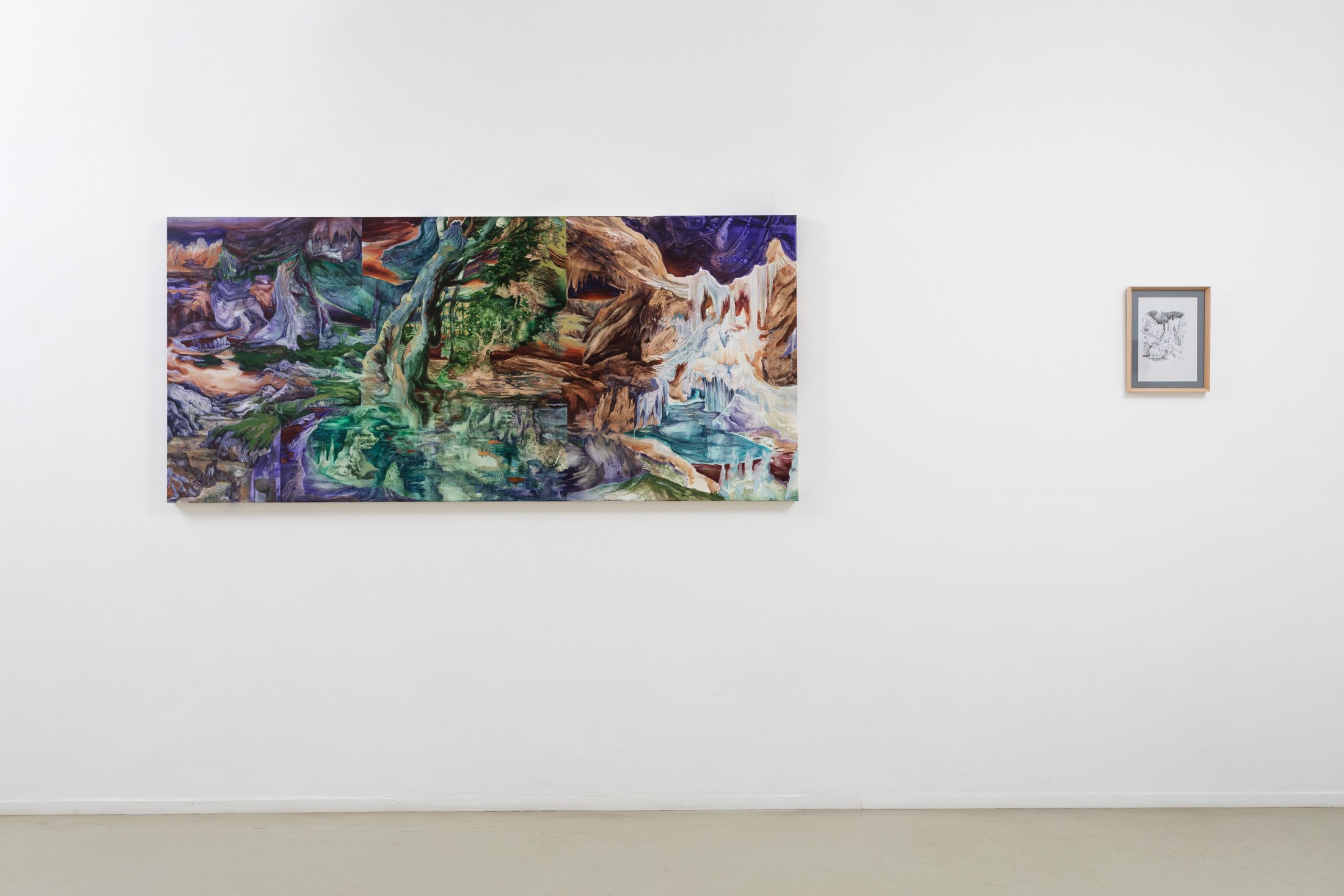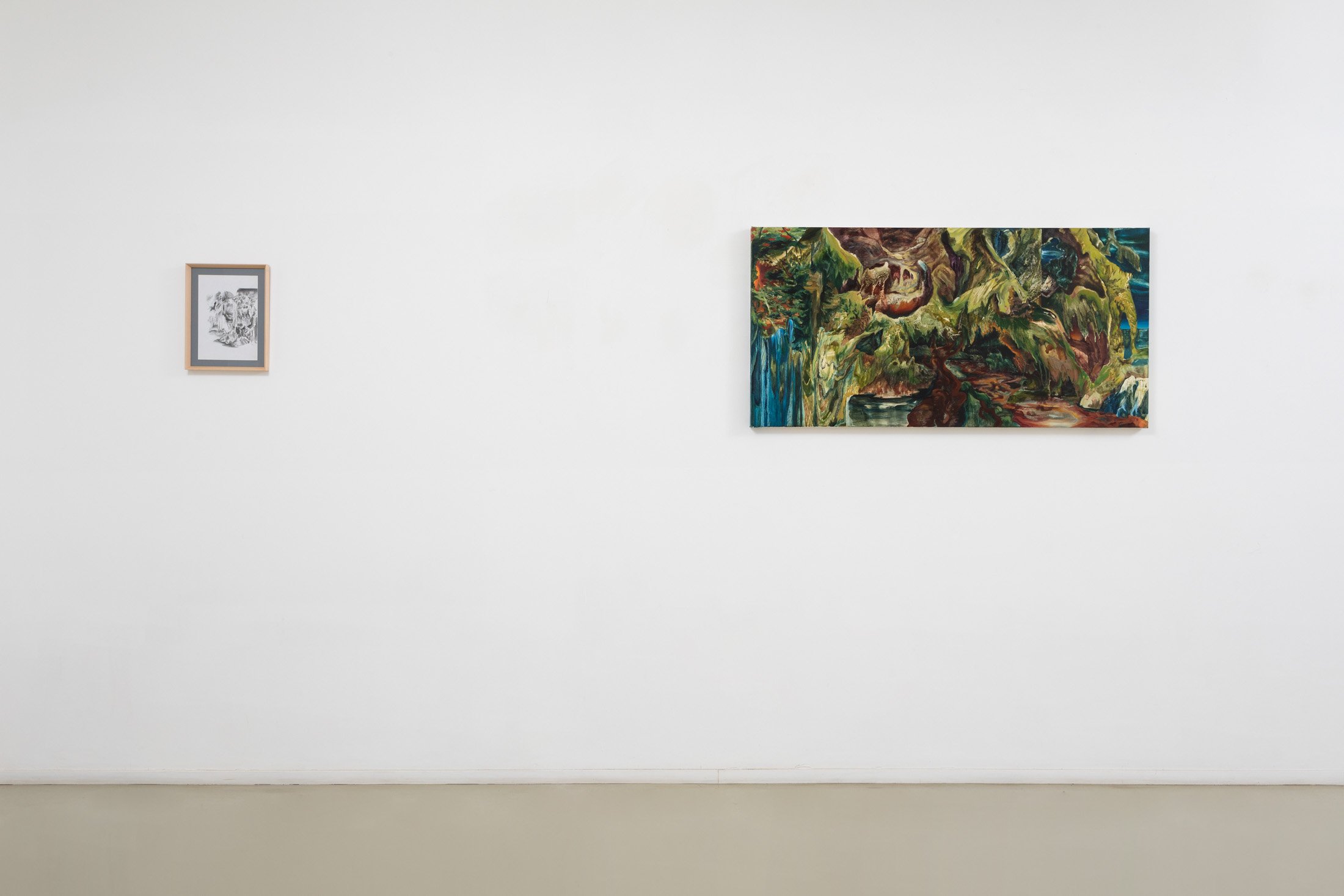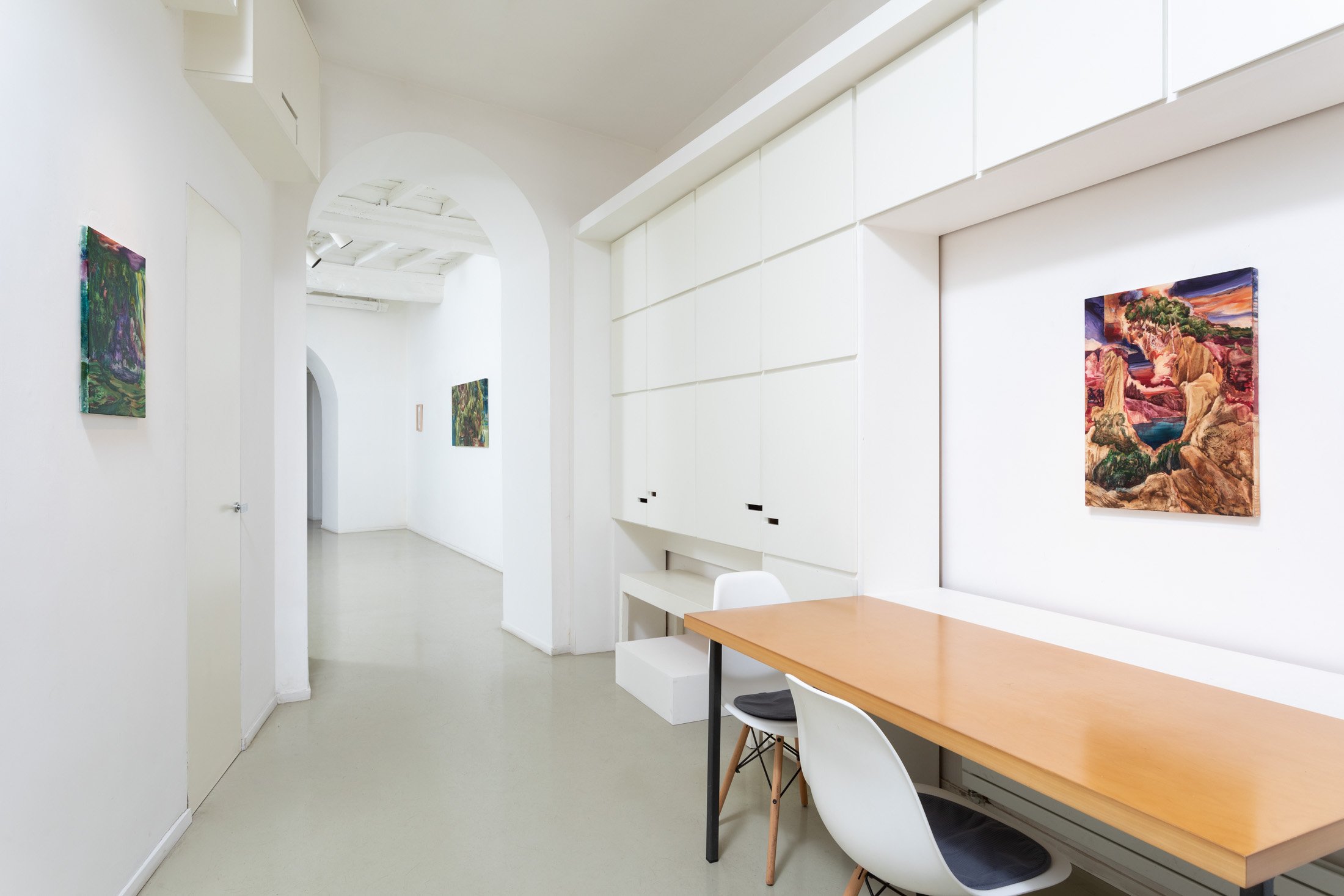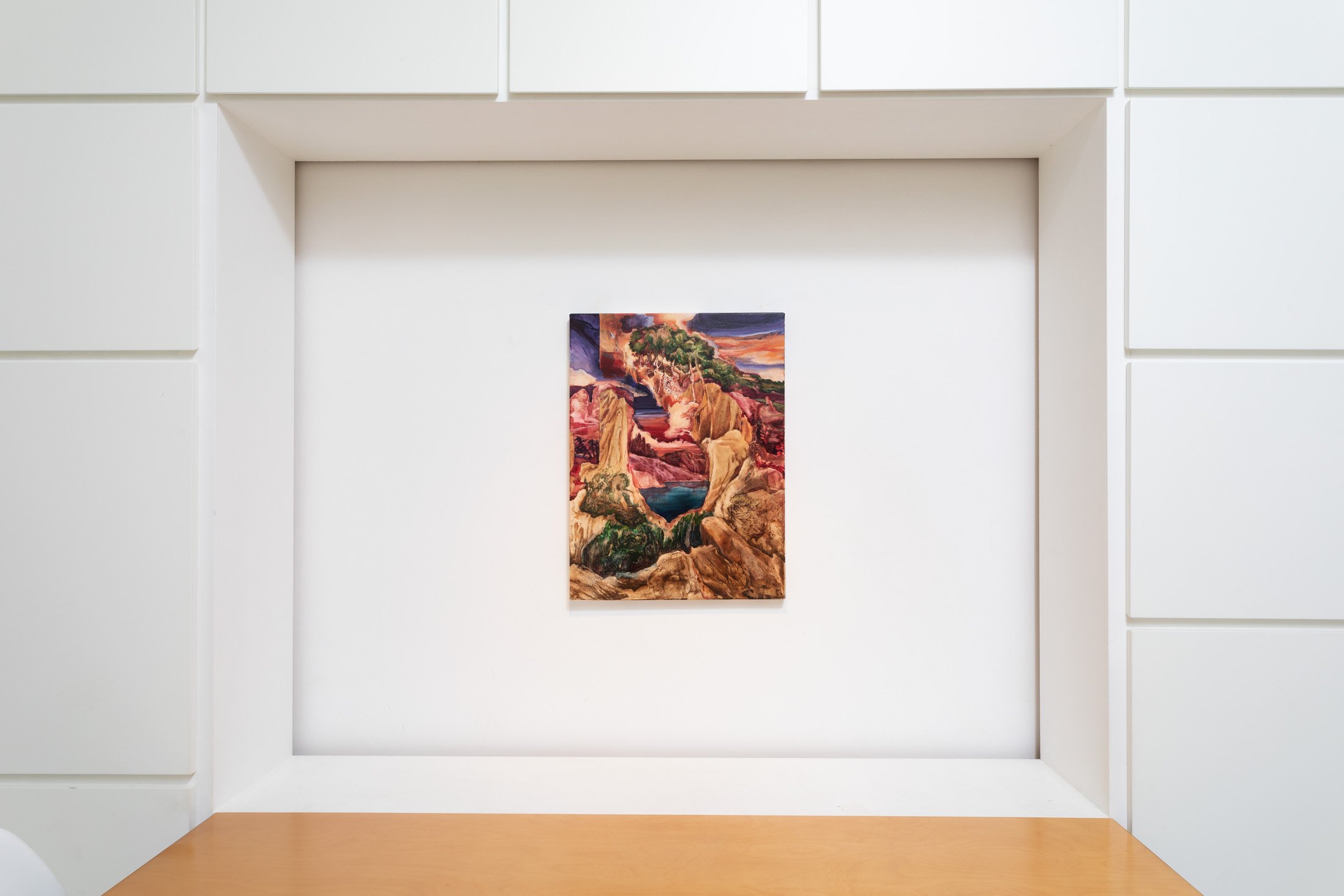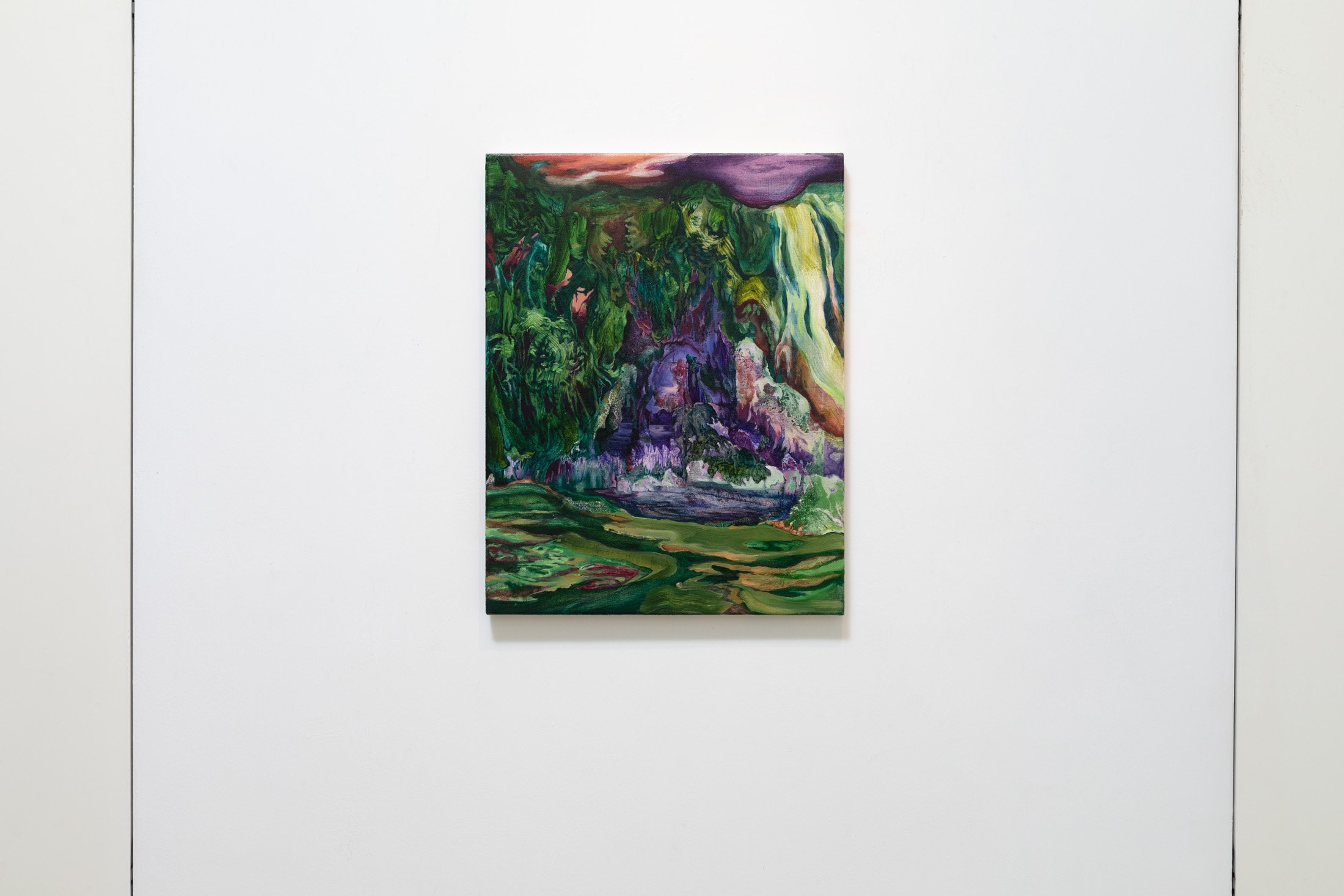Il continente buio
ALICE FALORETTI
OPENING WEDNESDAY january 25TH 2023
until SATURDAY march 25th 2023
Il continente buio
edoardo monti
For her second solo show at Francesca Antonini Arte Contemporanea, Alice Faloretti (Brescia, 1992) presents a new body of works which includes oil paintings on canvas and paper as well as pencil drawings.
As the cave goes deep into the bowels of the earth, I would like to start by looking at the technical details of Alice Faloretti's practice: how these works are made, what materials are involved. It all starts from photographs, taken personally or found in paper and digital archives, which often show shots of landscapes, holes in the rock, ponds, cracks in a Nature that is now quiet, now restless. These scenarios wallpaper the studio, providing constant inspiration to the artist, who at first makes preliminary sketches. She creates landscapes by breaking up the existing ones, sectioning and redesigning them and sometimes even assembling them before the final work. Everything starts with a mental image that, piece by piece, manifests itself as a set of real images.
The passage from the image to mechanical action is immediate: large amounts of oil and turpentine are poured on the canvas, mixed, pushed, smeared by large brushes that act as primordial extensions of artist's arms. This process creates large, unrefined forms, the real backdrop on which the final composition is built. Then there is a shift to the paper - where the pencil reworks the shapes on the turpentine-soaked canvas - and sometimes to tablets, that allow to visualise multiple scenarios, digital collages that include cut-outs of existing photographs, details of works in progress and digital pictorial actions. The artist returns to the canvas for the last, detailed process of meticulous construction of what will be the final scenario, characterised by a solid palette and a common thread that embraces all the works in the exhibition: the cave.
The project, entitled Il continente buio in honour of Francesco Sauro's essay in which the speleologist describes caves, grottos and underground mysteries and which inspired the artist so strongly in her creative process, is conceived from the work realised for the Cairo Prize 2022. Entitled Demorari, the painting deals with the theme of lingering, waiting, but also living and transience. The works exhibited focus on the dimension of the home and the human-nature relationship that it affects. The paintings follow the movements of the thought, moving from memory to a future image, from reality to imagination, from a soft brushstroke to an unexpected interruption, perhaps speaking to us of the difficult and fluctuating relationship that man has always had with Nature, the giver and taker of life.
The cave acts as a world within other worlds, a primordial home for primordial men - how can we forget the prehistoric paintings on cave walls in Spain and France? However, men are absent in Alice Faloretti's paintings, perhaps we are invited to deal with these deep and mysterious scenarios without being influenced by any third party experiences, being able to focus on the relationship between us and the other, identifying ourselves in this harmonious and conflictual process. Standing alone in front of these places, we feel pure, ancestral emotions: the desire to discover what lies in the darkness, the fear of the unknown. Places that nature offers as natural refuges take on an opposite role, holding fear and danger.
A key role was played by the readings that accompanied Faloretti in her research process for this project and that amplified his reflections on the subject, studied and stored together with parallel research on the world of cinematography, the history of art and nature. She focused on those interpretations that deal with the concept of ambivalence: interior and exterior, closure and openness, surface and depth both physical and intellectual, which often exchange meaning, presenting us spatial images that are simultaneously charged with inner meanings. It is a quest we find in all of Faloretti's works, now present in the layering and overlapping of oil colors, now in the separate fragments of pencil strokes on paper, which are nevertheless deeply interconnected with each other - boundaries dissolve, forms transform, everything flows, everything changes.
The concept of landscape moves beyond the imagery encouraged by the pictorial research of the past, which began to establish itself as an autonomous artistic genre in Western art only during the 17th century. Landscape painting was affected by the Academic prejudice, being classified as a minor genre, although it was well appreciated among collectors and art connoisseurs. Alice Faloretti embraces this subject-object by translating an expression of the mind into painting and representing an emblematic container full of multiple meanings. We get into the human mind, rather than into geological variations of nature. We are on the edge between a suspended time and an elapsed time. The cave plays an ambivalent role: a time capsule which freezes the flow of centuries and keeps fossils, traces, footprints, drawings, objects, but also an archive surrounded by absolute darkness, where day does not exist, where night does not exist; a gate that puts us in direct contact with a distant past, spent lives that have left traces within us.
Beyond the threshold, darkness and silence change our perception of reality, encouraging us to move away from the paradigms by which we live and survive in the outside world. Our sight is reduced, our hearing is intensified, we rely on our sense of touch to move and explore the darkness. We move towards the unknown and what should protect us and give us confidence, when reached, takes us into a parallel dimension: protection and anguish.
Alice Faloretti wants to create an alternative dimension, capable of recalling ancestral and primordial images, both near and far from our reality. These visions are made up by ambiguous, hidden and revealed forms full of possibilities yet to be discovered: an unfamiliar place but in which to find something familiar and from which to leave for other destinations.
